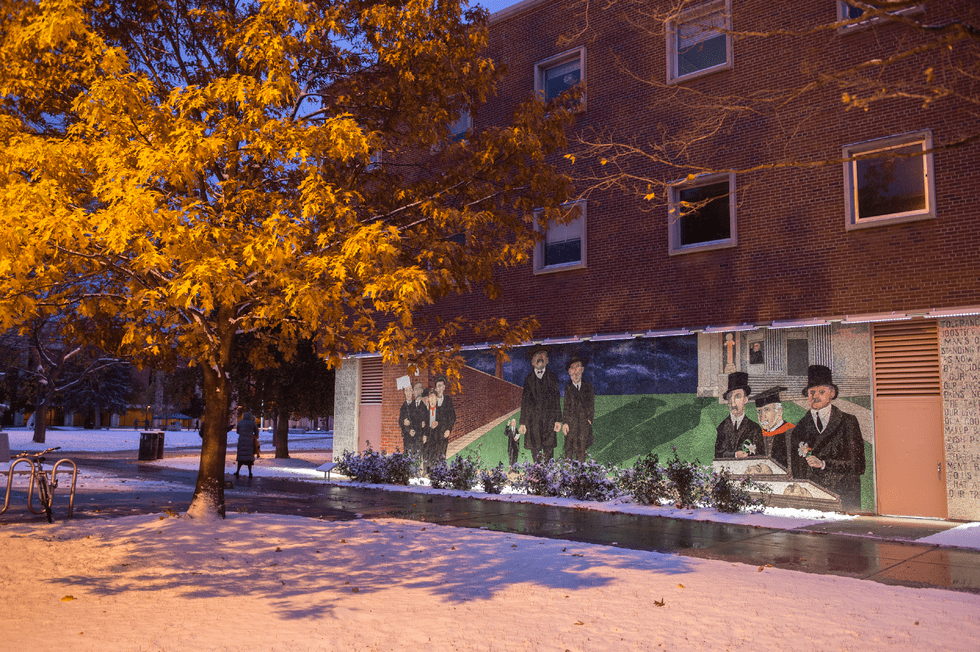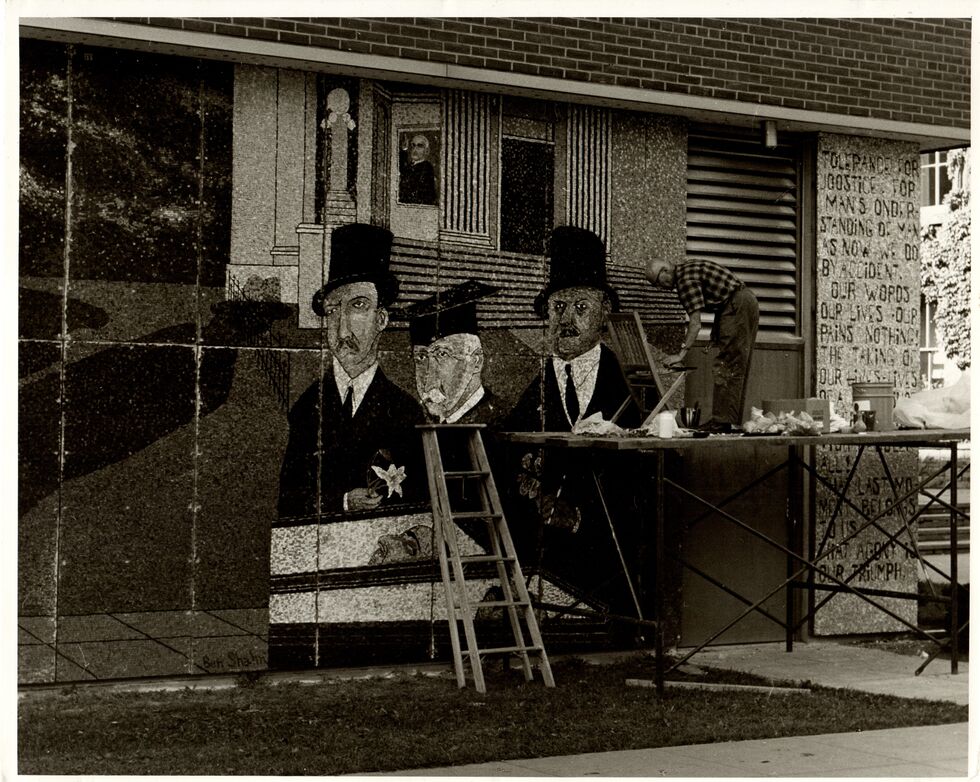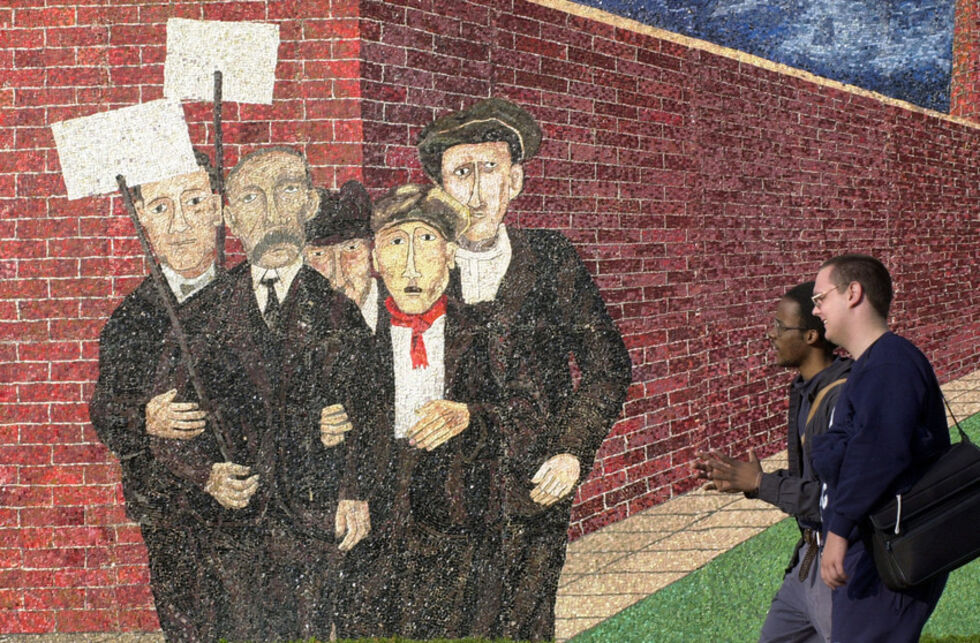The Passion of Sacco and Vanzetti Mural
"The Passion of Sacco and Vanzetti Mural" by Ben Shahn , 1967
The Passion of Sacco and Vanzetti Mural is a fiber panel mosaic created by artist Ben Shahn, an American artist born in Lithuania. The 3-section mural depicts the arrest, trial, and execution of two Italian immigrants, a case troubled by bigotry, political intolerance, and lack of due process. The men were accused of murder and stealing $15,000, though many believe that the motivation behind their arrest was their involvement in a communist militant group, their participation in labor strikes, and their evasion of the World War I draft in 1917. This piece of art is a valuable expression of social unrest and political turmoil at the time of the trial. The mural, located on the east facade of Huntington Beard Crouse Hall in the path between HBC and Hinds Hall, stands 12 feet tall and 60 feet long.
The trial of Sacco and Vanzetti was one of the most enduring subjects for Ben Shahn’s art. Shahn used his art as a means of critiquing American life and addressing social problems. Shahn chose the name of the piece, “The Passion of Sacco and Vanzetti,” to connect the trial to the “Passion of Christ”, associating Sacco and Vanzetti’s death with Jesus’ martyrdom. Upon its arrival to the SU campus, the mural was dedicated in memory of former SU student Richard Evans III, and gift of Ben Shahn and Richard Evans II, father to Richard Evans III, among other donors.
Ben Shahn was born September 12, 1898 in Kaunas, Lithuania, then part of the Russian Empire, to Jewish parents. His father, Joshua Hessel, was exiled to Siberia under suspicion of allegedly participating in revolutionary activities. In 1906, the family immigrated to Brooklyn, New York. At the age of 14, Shahn left high school for an apprenticeship with a lithographer. He missed his studies and proceeded to enroll at New York University to study biology. Shahn later changed course, and began studying at the Art Students League and, in 1925, at the Académie de la Grande Chaumière in Paris. He started painting in the 1920s to explore religious themes pertaining to his Orthodox Jewish heritage. Shahn returned to the United States and worked for various government programs throughout the 1930’s and 40’s, including as a photographer for the Farm Security Administration; and joined the Graphic Arts Division of the Office of War Information where he designed many magazine illustrations and advertisements. In paintings, photographs, and drawings, Shahn created powerful images that directly addressed human suffering, from war-torn landscapes to intimate views of loneliness and poverty. In his work, Shahn often cast a critical lens on American society by tackling racism, poverty, and oppression. In doing so, Shahn hoped to promote social reform.
SU University Archives; Kuykendall, L. (1968). "Shahn, The Passion of Sacco and Vanzetti." Khan Academy; The Never-Ending Wrong: The Execution of Sacco and Vanzetti. Syracuse University Special Collections Exhibits; Ben Shahn. Smithsonian American Art Museum; SU Photo and Imaging Archive; SU Art galleries/ SU Archives Photo Collection.


